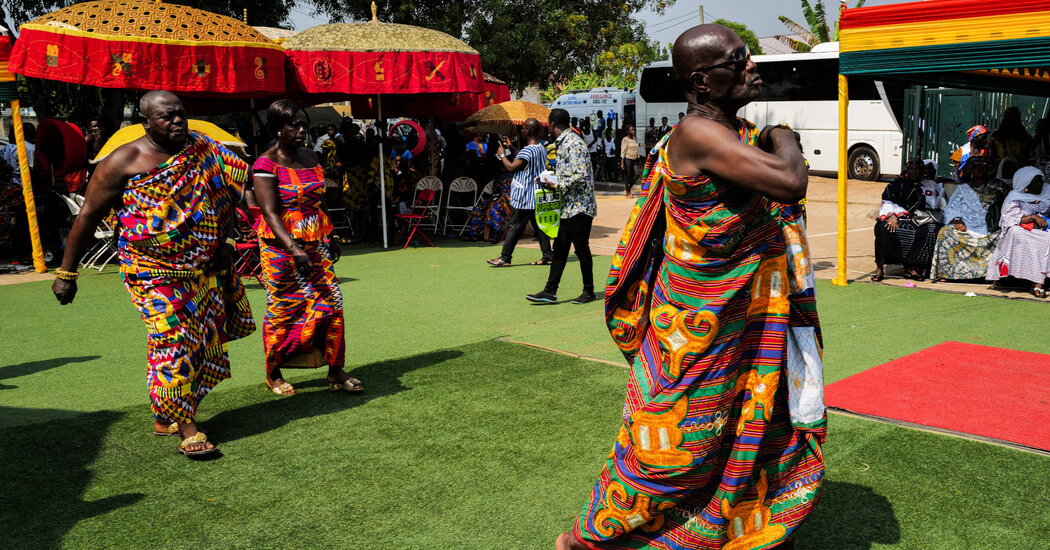Perhaps you’ve seen the kente cloth worn as a graduation stole by Black students at colleges and universities across the country.
After the killings of Black Americans in 2020, kente was worn by some Democrats in Congress, including Representative Nancy Pelosi and Senator Chuck Schumer. A 2021 Vogue cover featured the poet Amanda Gorman wearing a dress inspired by the cloth, designed by Virgil Abloh for Louis Vuitton. The boldly patterned textile, which originated in Ghana, has also inspired table cloths, T-shirts, hats and socks — like the pair Mayor Eric Adams wore in a video interview released last week.
Kente’s popularity in the United States speaks to the “place Ghana and Ghanaian culture hold in the Black American psyche,” said Daniel-Yaw Miller, a British Ghanaian fashion journalist. “It’s a way to signify a connection to the motherland even in absence of specific, direct relations back there.”
As the cloth has proliferated, so too have imitations made outside of Ghana, many of which come from China and are sold worldwide.
Now Ghana is cracking down on what textiles can be called kente.
In recent weeks, kente cloth received geographical indication status, a designation granted by the World Intellectual Property Organization, an arm of the United Nations that works closely with the World Trade Organization. It is meant to safeguard local artisans and the textile’s heritage by establishing that only kente cloth woven in Ghana can be recognized as authentic.
Popular items with G.I. status, as it is also known, include tequila, a name used only for spirits produced using agave grown in five states in Mexico, and Champagne, a term that in most instances cannot be used unless products are from France’s Champagne region.
Susan Scafidi, an author and professor who specializes in fashion law, said the G.I. status acts a lot like a trademark. Enforcing it typically comes down to both public pressure and governmental coordination, added Ms. Scafidi, the founder and academic director of the Fashion Law Institute.
“It is a complicated matter that does raise the question of how we balance the fluidity of culture and the joy of cultural interchange with recognizing origin and authorship at that collective level,” she said.
In June, Prada caused an uproar when it sent a sandal resembling a Kolhapuri chappal — a style of footwear with G.I. status from Maharashtra, India — down the runway. The Italian luxury brand has since entered talks with Maharashtra’s chamber of commerce to produce a “Made in India” collection in partnership with local artisans.
Kente textiles, which originated among the Asante, Akan and Ewe people of Ghana in the 17th century, have roots in even older West African weaving traditions. Once reserved for royalty and worn at sacred ceremonies, kente has distinct colorful patterns with different cultural meanings. Traditionally woven on narrow looms and stitched together in broad panels, the textile has long been among Ghana’s most recognizable cultural exports.
When Ghana gained independence from Britain in 1957, Kwame Nkrumah, then the country’s prime minister, put kente on the global stage by wearing it as a symbol of national pride and Pan-African identity. The textile’s embrace by political leaders and activists outside of Ghana has helped connect it to movements for Black empowerment across the diaspora.
As kente travels further from Ghana, Ms. Scafidi said, the G.I. status will help the cloth stay “closer to the traditional community, rather than leaving it completely unprotected at the whims of global commerce.”
Yola Mzizi is a reporter for the Styles section and a member of the 2025-2026 Times Fellowship class, a program for journalists early in their careers.
The post Cracking Down on What Can Be Called Kente Cloth appeared first on New York Times.




